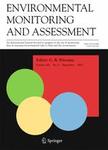版权所有:内蒙古大学图书馆 技术提供:维普资讯• 智图
内蒙古自治区呼和浩特市赛罕区大学西街235号 邮编: 010021

作者机构:West Chester Univ Penn Coll Sci & Math W Chester PA 19382 USA Chadds Ford Elementary Sch Chadds Ford PA USA
出 版 物:《ENVIRONMENTAL MONITORING AND ASSESSMENT》 (Environ. Monit. Assess.)
年 卷 期:2018年第190卷第6期
页 面:1页
核心收录:
学科分类:0830[工学-环境科学与工程(可授工学、理学、农学学位)] 08[工学]
主 题:Emerging infectious diseases GIS Deforestation Poverty Population growth Epidemic
摘 要:Land use change near dense forests is the single major cause of emergence of forest-based emerging infectious diseases (EIDs) among humans. In an attempt to predict where the next EID would originate from, we are hypothesizing that future EIDs would originate from a region having high population density, excessive poverty, and is located near dense vegetation. Using ArcGIS, we identified forest regions in ten countries across the globe that meet all the three conditions identified in the hypothesis. We further narrowed down the locations using Global Forest Watch data, which eliminates locations next to protected forests and fragmented forests. Our results indicate that there is high likelihood of next infectious disease originating from the southern and eastern forests around Freetown in Sierra Leone, the forest region around Douala in Cameroon, or the southern forest region in Nigeria. Concerted efforts need to be made to identify any new disease in the areas as soon as it emerges in the human population and contain the spread within the population.